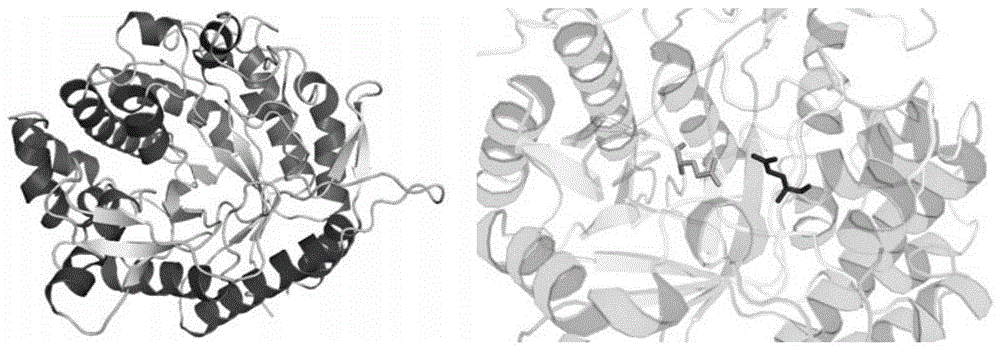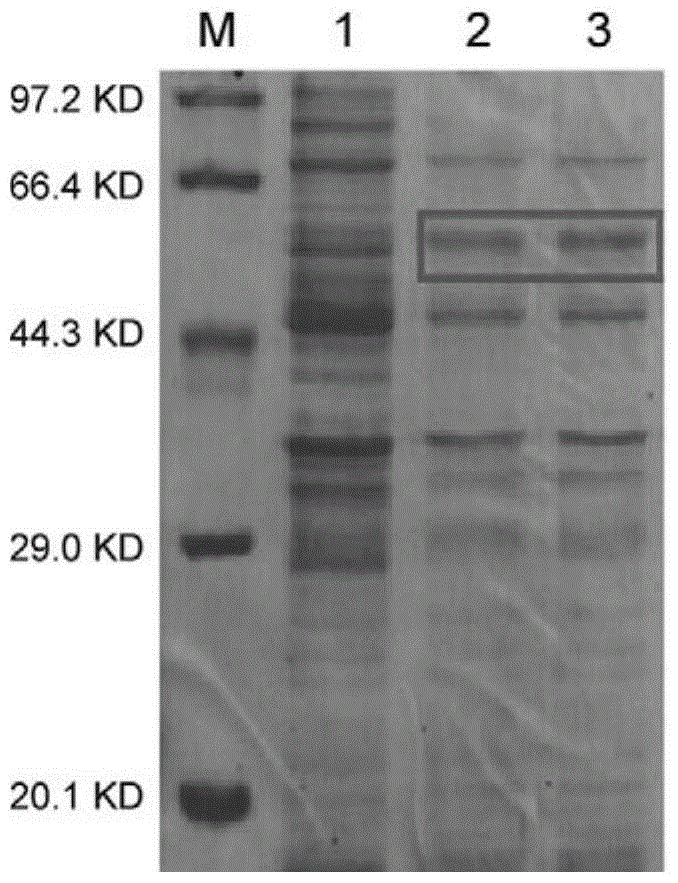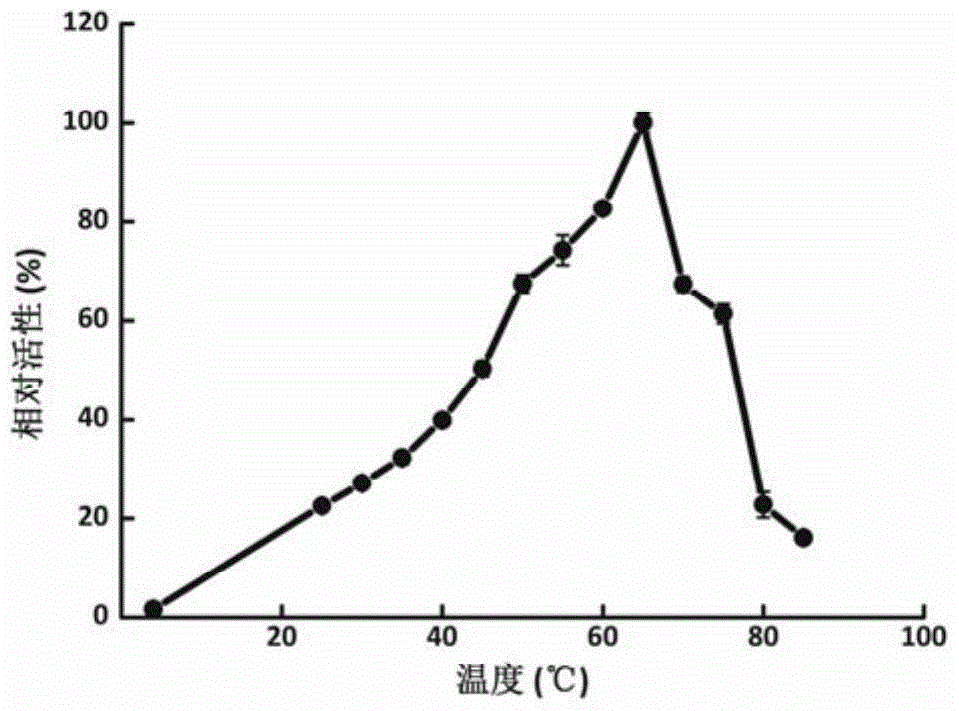f85-20 protein and its coding gene and its application as β-glucosidase
A technology of glucosidase and protein, applied in application, glycosylase, genetic engineering, etc., can solve problems that limit the efficient development of the biofuel industry
- Summary
- Abstract
- Description
- Claims
- Application Information
AI Technical Summary
Problems solved by technology
Method used
Image
Examples
Embodiment 1
[0040] Example 1. Cloning of F85-20 gene
[0041] In the previous research, the Fosmid vector was used to construct the metagenomic library of the dry fermentation sludge system. The ORF is predicted by sequencing and softberry, as well as the NCBI and Pfam database annotations. The F85-20 gene is obtained. The nucleotide sequence of the gene is the 19th to 1404th nucleotides from the 5'end of sequence 1 in the sequence list, and the encoded protein is named F85-20, and its amino acid sequence is the sequence in the sequence list 2 From the N'-terminal amino acids 1-462. After comparison, the F85-20 protein has the highest 60% similarity with β-glucosidase from bacterium UASB270, which is predicted to be β-glucosidase.
Embodiment 2
[0042] Example 2. Application of F85-20 as β-glucosidase
[0043] 1. Construction of recombinant vector
[0044] Using artificially synthesized sequence 1 as a template, using F85-20F and F85-20R as primers, and using TAKARA's PrimeStar high-fidelity enzyme for PCR amplification, a 1413 bp PCR product was obtained, and its nucleotide sequence was sequence 1.
[0045] F85-20F: 5’-CATG CCATGG AGATACAAATGAATAAACAT-3’ contains Nco I restriction site
[0046] F85-20R:5’-CCC AAGCTT GGCATAAAGGGCCTCC-3’ contains Hind III restriction site
[0047] The above PCR amplification system is as follows:
[0048]
[0049]
[0050] The PCR program is as follows:
[0051] 94℃ 1min pre-denaturation
[0052] 98℃ 10s
[0053] 68℃ 90s
[0054] Back to 2, 24 cycles
[0055] 72℃ 5min
[0056] End
[0057] The PCR product was double digested with Nco I and Hind III, and the digested product was ligated with the pET-28a vector (Novagen pET-28a DNA Cat. No. 69864-3) that had undergone the same digestion to obtain a rec...
PUM
 Login to View More
Login to View More Abstract
Description
Claims
Application Information
 Login to View More
Login to View More - R&D
- Intellectual Property
- Life Sciences
- Materials
- Tech Scout
- Unparalleled Data Quality
- Higher Quality Content
- 60% Fewer Hallucinations
Browse by: Latest US Patents, China's latest patents, Technical Efficacy Thesaurus, Application Domain, Technology Topic, Popular Technical Reports.
© 2025 PatSnap. All rights reserved.Legal|Privacy policy|Modern Slavery Act Transparency Statement|Sitemap|About US| Contact US: help@patsnap.com



